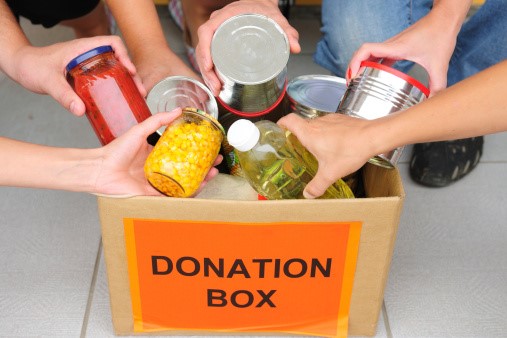Millions of people across the United States suffer from food insecurity. This includes people currently out of work, those dealing with unusual financial stresses (like an unexpected illness or accident), and people on insufficient fixed incomes.
Food insecurity also hits working men and women who simply don’t make enough money to guarantee their families that there will always be food on the table.
You undoubtedly know someone in this situation. Pride may keep them from telling you about it, but they are out there. The situation has many folks wondering, “Could I start a food bank on my own?”
The short answer is, “Sure!” The longer answer is that with some careful planning, anyone can start a food bank.
First thing to do is decide what exactly you want to do. A food bank is a large venture involving a lot of storage space, management and coordination. When most people want to help a neighborhood and ask “Could I start a food bank on my own?” they really have a food pantry in their mind.
A food pantry is where needy neighbors can stop by and pick up some groceries every week or two. A food bank receives and store huge amounts of food from manufacturers and distributors that can be shared with individuals and other organizations- like your food pantry- at little or no cost.
To get started on any of these adventures, you have to understand a bit about your target clientele. What are their needs? How often and at what hours can they come to pick up food? Talk to churches and social programs in the area to see how big a need they think there is. They also may provide other assistance to you like information about local regulations and providers for food pantries.
Then you have to figure out how you can get enough food for such a venture. If there is a larger food bank in the area, reach out to them. Quite often, these food banks have sharing programs to assure that no food expires in their storage areas. They can also coordinate cross-donations and sharing among the food pantries and organizations they serve.
Most food pantries will hold food drives specifically for their shelves. Churches, schools and civic organizations are all sources that can hold drives for you. Occasionally, you may need to buy certain items that are in short supply. Plan fund-raisers or set up a donation network to help you through the leaner months.
There are two models for distributing food. The first is the box program where you load boxes with the same items and hand one to each recipient. This is easier to manage, but often results in wasted food because it does not account for special needs, such as allergies or medical conditions, that don’t allow some families to use particular items.
The other is pick and choose. This is like grocery shopping. If you have the space, people can literally walk along and put items in a bag or box. With limited space, you can provide a list of what is available and fill orders while they wait.
Another very important task is to let people know you are there. Print introductory fliers or letters and ask the neighborhood schools or churches to hand them out. Give them to everybody, not just someone you think needs the help. You will be surprised at who some of your clients are.
Plan a short and painless introductory process to make sure people qualify. Keep in mind that these people are often embarrassed by their circumstances. Don’t be condescending or overly caring, either. Just be matter-of-fact and accepting. Act like you’re a client, too.
Could I start a food bank on my own? Sure I could. You can, too. Good luck and God bless your project. However, you can still contact us if you have any ideas how we could join our forces and work together.






